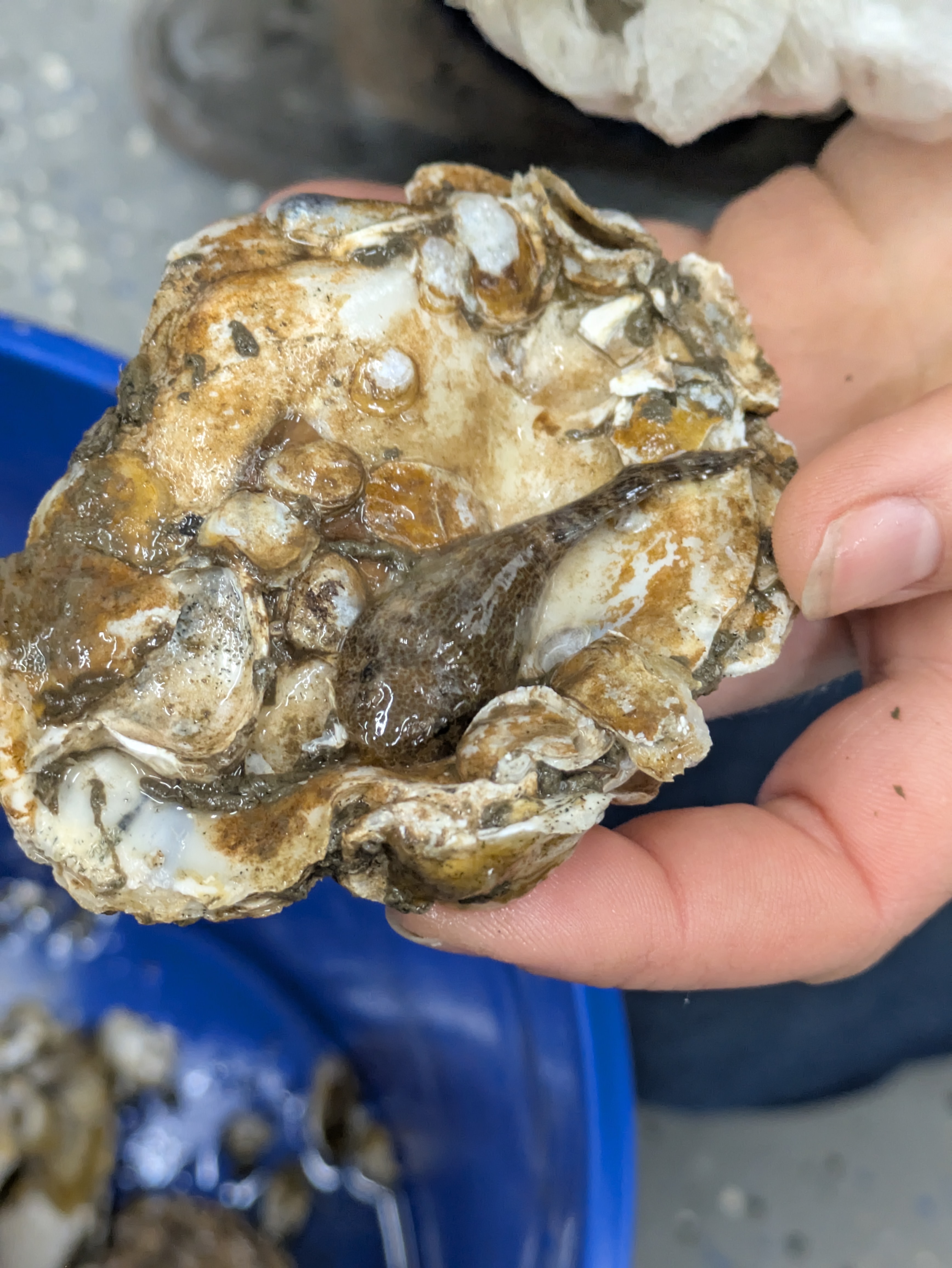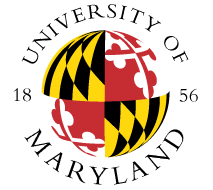Biology: Ecology and Evolution
College Park Scholars-Science and Global Change Program

A Skilletfish found living among baby oysters!
Email: mkuipers@terpmail.umd.edu
For my practicum project, I worked with the Chesapeake Bay Foundation in Annapolis, MD. I found the site through the University of Maryland’s Alternative Breaks program, which offers multiple service learning opportunities to students. Housing, food, and transportation are managed by the program, and service work is completed as a group. It is a great opportunity to learn about science, social justice, and work as a team with your fellow UMD students. While working with the Chesapeake Bay Foundation, I split my time between the Oyster Restoration Team and the Claggett Farm Team.
While working with the Oyster Restoration Team, I prepared oyster bags for CBF’s Maryland Oyster Gardening Program and cleaned recycled oyster shells for the main program. Every year, recycled oyster shells are put into large tubs where oyster larvae are released. After a few days, the larvae attach to the recycled shells. Once attached, the larvae are called “spat” and allowed to grow over the next few weeks. Once the spat are established enough, the oysters are loaded onto a boat and distributed into protected zones to establish and supplement native oyster reefs in the Bay. For the Maryland Oyster Gardening program, spat on shell is given to community members in bags. These bags are hung off the side of local docks and allowed to grow for a year. In addition to providing education to the public, the program also allows spat to become more mature before being released into the Bay. I was able to look at some examples of these oyster gardens, and just one bag held a multitude of different organisms like crabs, fish, and shrimp. While working with the Chesapeake Bay Foundation, I learned how important oyster reefs are to the health of the Chesapeake Bay. They provide critical habitat for bay species and filter sediment and pollutants from the water. I also learned about how the health of the Bay harms the local economy. Habitat loss reduces the amount of crabs and fish for watermen to catch, and murky, polluted waters reduce the tourist attraction and hurt local businesses and property value. Seeing how scientific problems with the Bay’s Health impact and react with the people who live there has motivated me to explore solutions to scientific problems that also promote the health and well-being of the people.
While working with the Clagget Farm Team, I spent most of my time working in the native tree nursery, where native trees are grown and distributed to local farms to create riparian buffer zones. These buffer zones prevent nutrient runoff from fertilizers and manure from getting into local streams and making their way into the Bay. Nutrient pollution leads to a phenomenon known as eutrophication, which causes algal blooms. These algal blooms block sunlight from reaching the seagrasses below and can emit toxins into the waters. What's more, when the algae die, the mass decomposition reduces the oxygen content of the water, creating oxygen-depleted dead zones where organisms cannot survive. In addition to working in the tree nursery and planting trees on local farms, I was able to learn about other sustainable farming practices that reduce nutrient pollution and promote food production and quality. These techniques included crop rotation, where fields cycle between resting years and different crop types to prevent the soil quality from degrading. During the resting years, a cover crop of legumes and rye was added. The legumes help fix nitrogen into the soil, which will help grow new crops in the future and reduce the amount of fertilizer needed. The farm also practices composting, rotational grazing, and grows its hay on site to reduce costs and promote both economic and environmental stability.
One of the most valuable things I learned was about how farmers are affected by the science and policies surrounding sustainable agriculture. Farmers are incredibly important to our society because they grow the food we eat every day. But farmers are also often in financial struggle, with their finances depending on their yearly yield. This does not promote flexibility and leaves farmers reluctant to change their techniques or implement expensive nutrient reduction plans without a guarantee that it will financially benefit them. With the way our economy works, farmers cannot afford to take risks or perform experiments with their livelihoods. Talking with the people on the Clagget farm gave me a fresh perspective on the issue of sustainable farming from the point of view of the farmer. One farmer told me about his frustration with the lack of research on how much nutrients are actually needed to grow a crop and how other factors, such as soil microbes, can improve the yield of his crops. He also described how it is hard for farmers to simply listen to what scientists say without being able to see their suggested methods work successfully on a real farm. This is exactly what Clagget Farm hopes to achieve. By demonstrating that sustainable farming practices actually work and do not harm food production, more farmers will be willing to implement them on their own farms. In fact, the Chesapeake Bay Foundation works with farmers to implement these sustainable practices so they are not on their own. Having taken multiple environmental classes at UMD, it is easy to fall into the mindset that farmers are the villains in the story of the Chesapeake Bay. I cannot count how many times I have heard how agriculture is the leading source of pollution into the Bay. But the truth is that many farmers care about the Bay and the people who rely on it. It is important that we work with farmers and not against them if we want to save both the Chesapeake Bay and the people who rely on it.


